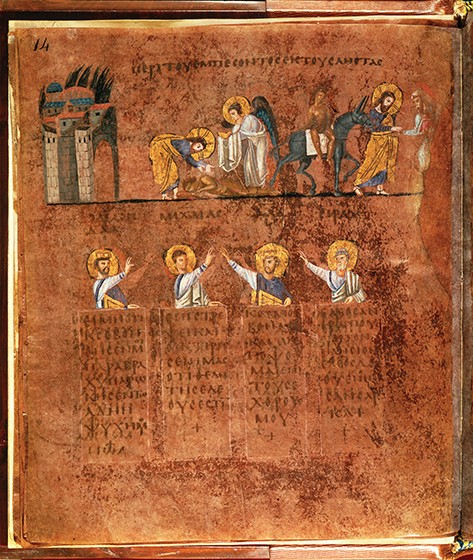The Good Samaritan, from the Codex Purpureus Rossanensis (early sixth century)

The sixth-century Codex Rossanensis is one of several “purple codices” written on expensive, purple-dyed vellum. It is possibly the oldest extant illuminated manuscript of the New Testament, containing Matthew and most of Mark. The Rossano Gospels include a cycle of miniatures that are sequentially arranged according to lectionary readings. The scene depicting the parable of the Good Samaritan in the upper register (with the four evangelists below) is read from left to right, beginning with the city of Jerusalem. In the middle scene, the injured traveler has been left for dead and is being tended by Christ and an angel. In the last scene, the Good Samaritan/Christ figure has placed the injured traveler on his donkey and is transacting with the innkeeper for the man’s care. This depiction draws on a broad interpretive tradition that identified the Good Samaritan as a Christ figure. Despite the modern critical consensus that cautions against allegorizing every detail of the story, there are clues in Luke’s Gospel that encourage this interpretation. In Luke’s Gospel, only God—or God’s agent, Jesus—shows mercy (1:68–69, 72; 17:13–14; 18:38–42). Thus Jesus’ command at the end of the parable to “go and do likewise” might be viewed as a call to followers to imitate Christ’s mercy.





